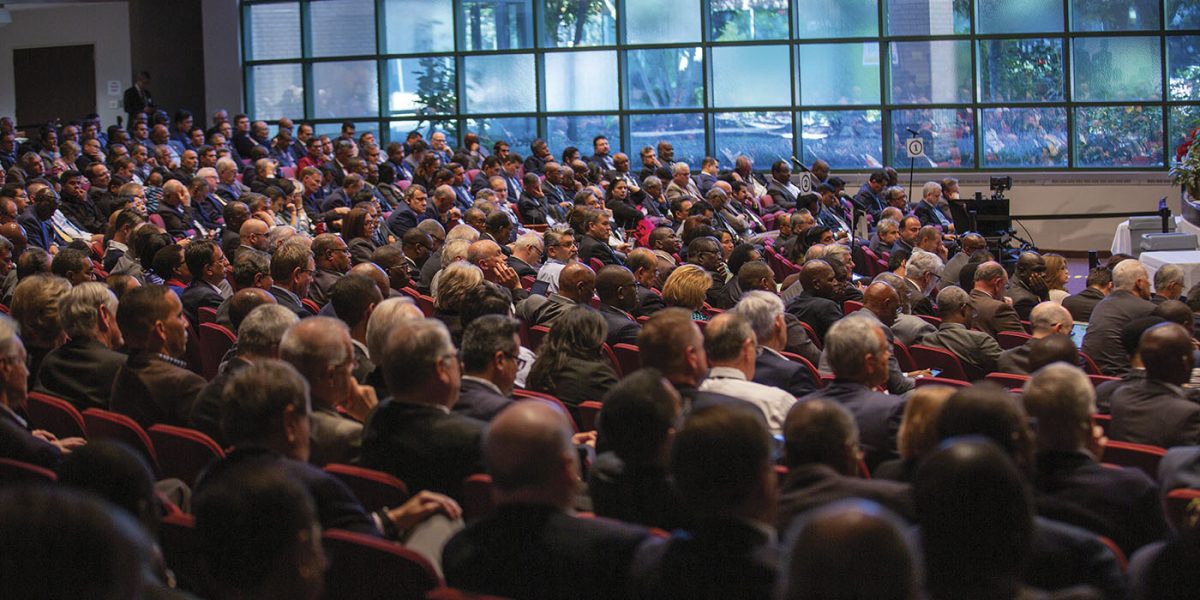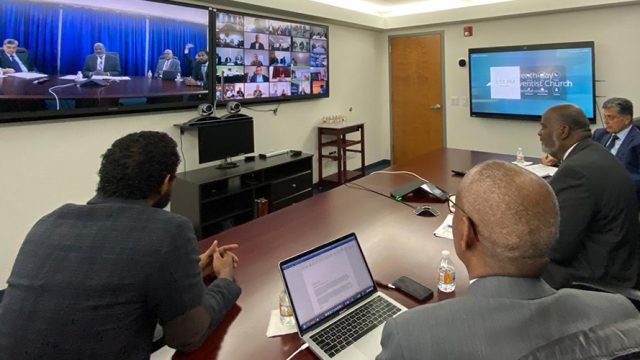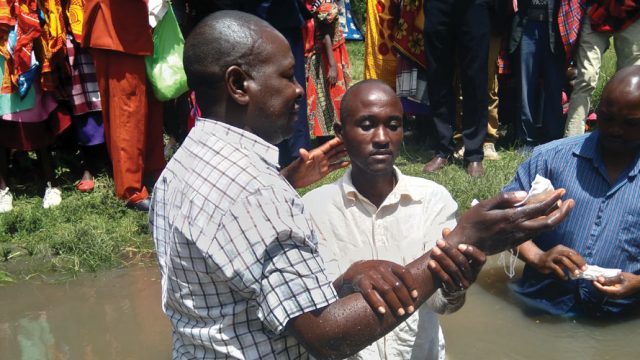By 2030 every world church division will contribute the same base percentage of tithe to the General Conference

Achieving parity in tithe contributed by world church divisions to the Adventist Church’s world headquarters dominated the Monday afternoon discussion of the delegates to the Fall 2019 General Conference Executive Committee meeting, called the Annual Council.
Parity in financial matters describes a future scenario in which all thirteen Seventh-day Adventist world territories (called divisions) contribute the same base percentage of their tithe to the denomination’s global headquarters—the General Conference (GC). The GC uses its allocated portion of tithe to fund headquarters operations as well as appropriations, which are funds distributed back to world divisions by the GC.
How It Works
The financial structure of the Adventist Church involves tithe (10 percent of a member’s income) contributed at the local church. The local church sends the tithe to the local conference, an administrative unit which oversees a defined geographic area. While most tithe funds remain in the conference to pay for operations, pastoral salaries, and other mission projects, a portion is sent on to other administrative units, including the GC and its divisions.
Historically, the North American Division (NAD)—the birthplace of the Seventh-day Adventist Church—has contributed a greater percentage of its tithe to the GC. As recently as 2012, the NAD was contributing 8 percent of its tithe allocation to the GC, while the rest of the divisions were contributing 2 percent.
An official change in General Conference Working Policy, voted by the GC Executive Committee in 2011, lowered NAD’s contribution from 8 percent to 5.85 percent. The plan was incrementally phased-in over an eight-year span and reflected a growing need in North America to fund mission-focused activities.
In 2018, the NAD Executive Committee requested, through an official vote, a continued conversation with the GC to pursue a further lowering of the division’s tithe remittance to the GC with the goal of reaching tithe parity (equality) among all its divisions.
Parity would mean North America would no longer be perceived as a denominational “father, but rather an equal partner [with the other divisions] in responsibilities and mission work,” explained GC treasurer Juan Prestol-Puesán.
The Proposal
After nearly a year of conversation and dialogue with and among world divisions, GC Executive Committee members were presented on October 14 with a plan that would incrementally phase in complete parity by 2030. Beginning that year, every world church division will contribute an equal three percent of its allocated tithe to the GC.
“We have had some very intense and good meetings with our division officers, including North America,” said Adventist World Church president Ted N. C. Wilson. “We had some serious conversations.”
According to the proposal, the existing GC Working Policy 235-19G, entitled Support of Worldwide Work (Sharing Financial Resources) would be amended to include a table along with further details and explanations outlining the path to parity.
Introducing the amended policy, Wilson began by acknowledging the work the NAD has done throughout the years to develop a Seventh-day Adventist presence around the world. Attendees responded with a standing applause and “Amens.”
Prestol-Puesán agreed. “All territories overseas owe the North American Division a debt of gratitude.”
Discussion on the Floor
During further introductory comments, Wilson clarified that the dialogue involved a diversity of perspectives. “Did everybody agree? No,” Wilson said. “But the proposal has some provisions that will allow for discussion.”
Discussion from the floor reflected that diversity.
After thanking GC treasury staff for their work on the request, NAD Treasurer Randy Robinson explained “We are privileged to help the world field. We have been privileged to do so and will continue to feel privileged to do so. We’re grateful for the mission that happens around the world, but we’re also mindful of the mission that needs to happen in North America. It is our desire to pass these resources on to the local field.”
Delegates from various parts of the world also expressed their gratitude to NAD for its contribution to world mission. “On behalf of our part of the world I would like to thank the North American Division,” said Edward Tupa’i, president of the New Zealand Pacific Union Conference. Tupa’i then recalled how the Adventist message came to New Zealand by American missionary Stephen Haskell. “It’s something we are eternally grateful for.”
Other delegates expressed concerns about the direction of the proposal. Kathy Haycock Proffitt, a lay member from the NAD, suggested that this decision would have a direct impact on global outreach. “I understand parity, but unfortunately this will not include level-playing fields,” said Haycock Proffitt. “Those with the least money will have to pay more while receiving less.”
Other delegates outside of the NAD agreed with the motion. “I support this motion more than 100 percent,” said Kenaope Kenaope, an Executive Committee member from the Southern African-Indian Ocean Division. “A child who does not grow should be a concern to a parent. If NAD says they can’t be a father, that’s fair enough. Really, why should you have a child in your house that stays for eternity. Let’s emphasize the capability of the God of the global church to carry us through.”
Decision
Following two hours of presentation and debate, Executive Committee members voted in favor of the motion to implement the proposed Working Policy changes.
Thomas Lemon, GC general vice president who chaired the discussion, congratulated attendees for a healthy dialogue. “While we are concerned for mission going forward, we can praise the Lord for mission that has been done because we are here in a group that represents so much of the culture and groups that make up our world.”
Following the vote, NAD president Dan Jackson thanked the delegates representing nearly 200 nations. “I want to thank our world brothers and sisters for the support of the North American Division. Thank you very much. God bless you.”








